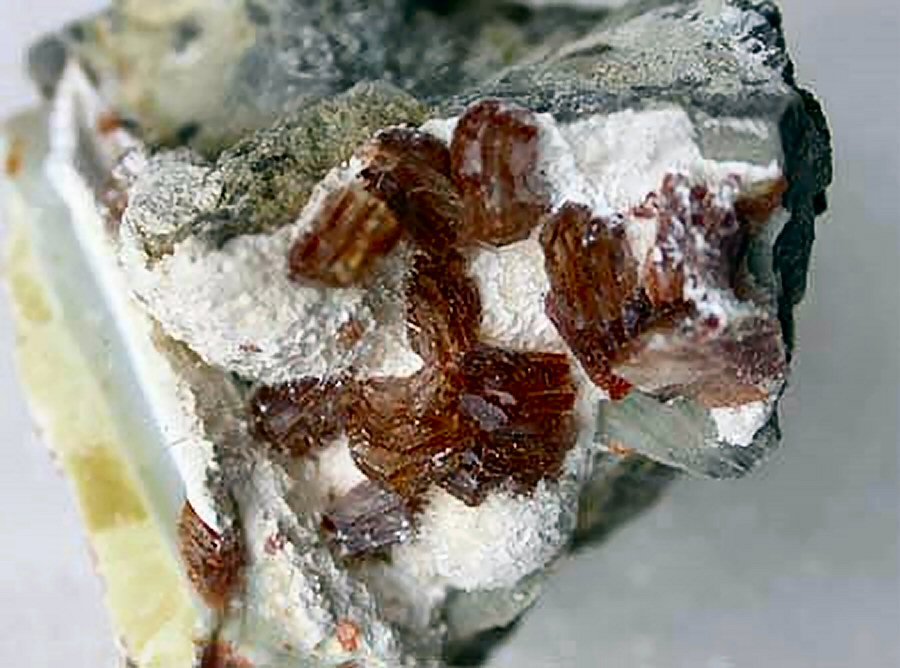Background of Clinoptilolite
4 min read
Zeolites are a family of crystalline aluminosilicate minerals. The first zeolite was described in 1756 by Cronstedt, a Swedish mineralogist who coined the name from two Greek words meaning ‘boiling stones’, referring to the evolution of steam when the rock is heated. About fifty different natural zeolites are now known and more than one hundred and fifty have been synthesized for specific applications such as industrial catalysis or as detergent builders.
Clinoptilolite is a naturally-occurring zeolite, formed by the devitrification (ie the conversion of glassy material to crystalline material) of volcanic ash in lake and marine waters millions of years ago. It is the most researched of all zeolites and is widely regarded as the most useful. In common with other zeolites, clinoptilolite has a cage-like structure consisting of SiO4 and AlO4 tetrahedra joined by shared oxygen atoms. The negative charges of the AlO4 units are balanced by the presence of exchangeable cations – notably calcium, magnesium, sodium, potassium and iron. These ions can be readily displaced by other substances, for example heavy metals (mercury, lead, cadmium, etc..) and ammonium ions.
This phenomenon is known as cationic exchange, and it is the very high cationic exchange capacity of clinoptilolite which provides many of its useful properties. Clinoptilolite is currently used in diverse applications such as drinking water purification, air filtration, plant fertilizer and as an animal feed additive. Many studies have shown that clinoptilolite absorbs toxins created by molds in animal feeds83, as well as enhancing nutrient absorption by cattle, pigs, lambs and other animals84-86. In the United States, clinoptilolite falls under the category of sodium aluminosilicate and has GRAS (Generally Recognized as Safe) status used primarily as an anti-caking agent (Code of Federal Regulations, Title 21, Section 182.2727)87.
Because of its cage-like structure and negative charge, clinoptilolite has the ability to draw to itself and trap within itself positively charged heavy metals and other toxic substances. The zeolite in the Mega Defense™ attracts and traps small, highly-charged particles that fit into the pores and channels of the zeolite cage.
Whereas most chelating agents used for detoxification are non-specific, only relying on charge for binding potential, the clinoptilolite seems to be highly specific for the toxic heavy metals. Research has shown that the smaller the diameter of the metal and the higher the charge of the metal, the greater the affinity it has for the activated zeolite. Higher charges simply increase the strength of binding with higher binding characteristics. The small size allows for deeper access into the zeolite pores with more points of coordination (attachment). Larger atoms do not fit into the zeolite cage as well and so are more easily exchanged for higher-affinity metals. As an example of this phenomenon, arsenic has a charge of +3 and an atomic radius of approximately 1.8 angstroms, while potassium has a charge of only +1 and an atomic radius of approximately 2.8 angstroms. The arsenic binds with very high affinity for the zeolite while the potassium has no affinity whatsoever88,89.
The metals that are toxic to humans are toxic because they are smaller atoms that carry a higher positive charge and can easily displace the essential electrolytes, which tend to be larger and have less charge density. These essential ions are not essential because they are larger or “weaker”, they are essential because nature integrated them into human biochemistry – the size and charge of the essential metals integrate with the peptides, proteins and enzymes they are components of, allowing the biomolecules to fold properly and take on the form and function necessary to support life.
The smaller, higher charged ions insert into these precisely folded peptides, proteins and enzymes, displace the essential metals and, simply because they are the wrong size and charge, change the 3-dimensional structure of the biomolecule which alters both form and function. Size and charge, in this case, are simply circumstantial to activity. The zeolite in the MegaDefense preferentially binds smaller, more charge-dense ions. That is the primary characteristic for which it was selected for use in the product. Metals with a smaller size and a higher charge will bind with greater affinity for the zeolite. The smaller size allows for deeper penetration into the zeolite cage. Additionally, the smaller size allows for more points of coordination with the zeolite. In other words, more of the surface of a small atom will be held directly by the zeolite. The higher charge allows for a tighter bond simply because of charge-to-charge interactions. Consider the example of refrigerator magnets to illustrate this point. A weak magnet will not stick well to the side of a refrigerator and will not even hold one piece of paper. This is like a metal with a low charge trying to be held by the high negative charge of the zeolite. A strong magnet can hold many pieces of paper to the refrigerator and is hard to remove because of its strong interaction. This is similar to a metal with a high positive charge that will bind very strongly to the high negative charge of the zeolite cage. As we stated previously, all of the metals that are good for us (magnesium, calcium, potassium, etc..) tend to be large with lower charges. All of the metals that are toxic (mercury, lead, arsenic, etc..) tend to be smaller with higher positive charges.


